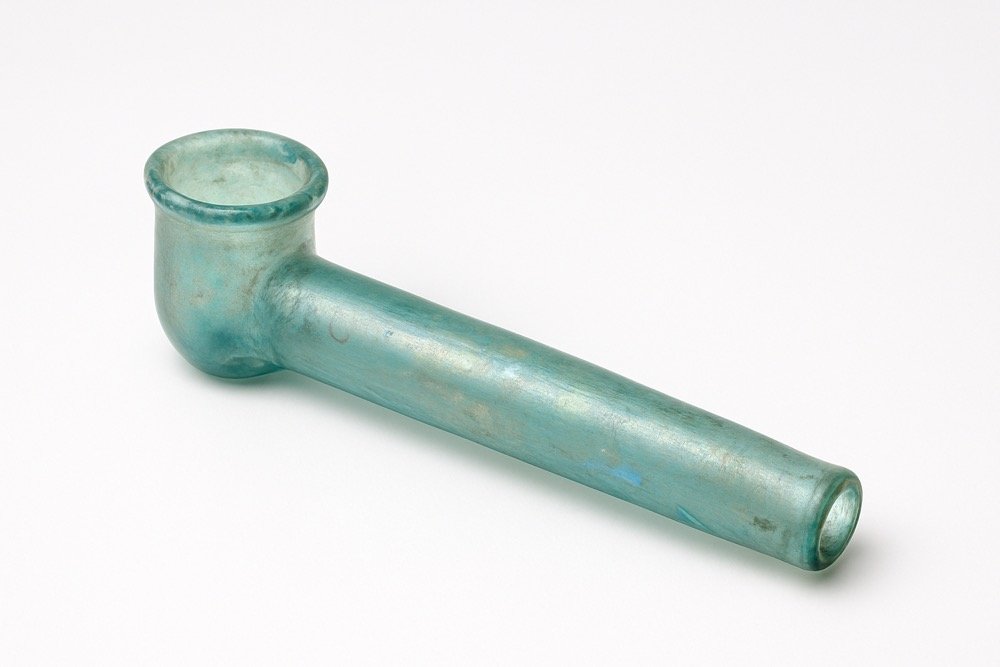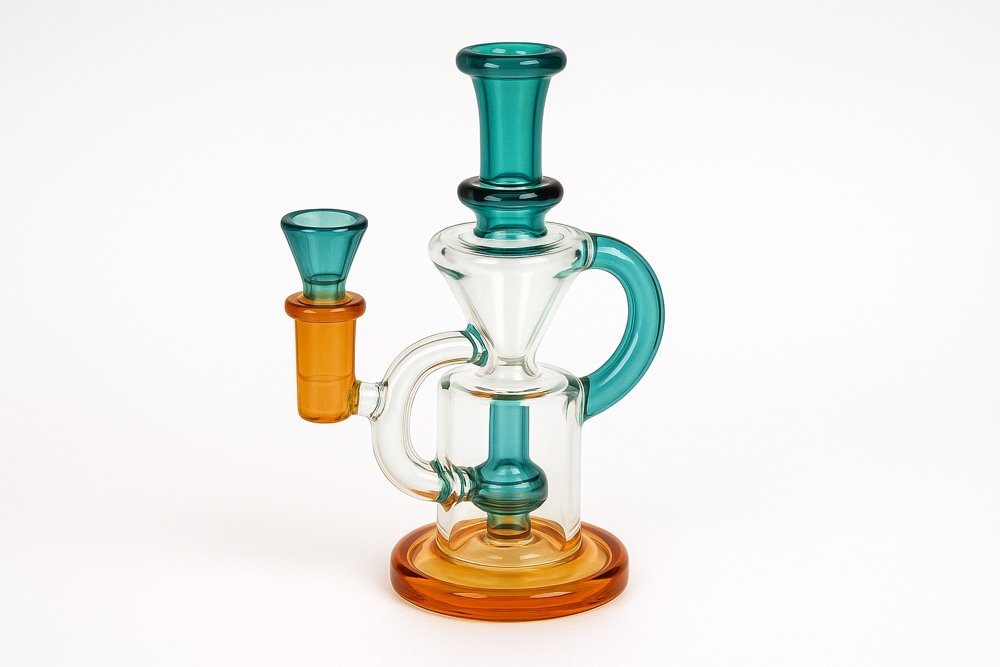The glitter of molten silica under a torch isn’t new—it’s ancient. Yet many buyers assume glass smoking pipes are a modern fad, so they hesitate to stock certain shapes or pay for higher-end craft. That gap in knowledge eats margin and credibility.
For quick context: Glass smoking pipes date back almost two millennia. Roman artisans first blew slender glass tubes for herbal inhalation, trade routes spread the craft, and nineteenth-century chemists perfected borosilicate for heat shock resistance. Today’s recycler bongs stand on the shoulders of those breakthroughs, combining durability with art.

Curious how we jumped from empire-era sand to neon recyclers? Let’s take a guided tour.
What is the history of glass smoking pipes?
Archaeologists have traced the earliest purpose-built glass pipes to the late Roman and early Byzantine periods, where small, hollow beads and tubes allowed fragrant resins to be heated and inhaled :contentReference[oaicite:0]{index=0}.
In one sentence: Glass smoking pipes evolved through four major eras—Roman experimentation, medieval Islamic perfuming, colonial trade adaptations, and industrial borosilicate revolution—before blooming into today’s functional art scene.

Why does it matter?
Understanding that lineage helps wholesalers evaluate authenticity claims, spot fad copies, and explain premium pricing to retailers. Cultural backstory also elevates perceived value, a proven sales lever according to the Society of Glass Technology reports :contentReference[oaicite:1]{index=1}.
Put simply: History converts commodity glass into storytelling inventory—stories justify higher invoices and stronger shelf presence.
How to choose the right one?
Match era to market:
- Heritage lovers adore vintage-inspired spoon pipes with subtle roman blue tints.
- Tech-minded shoppers trust borosilicate recyclers tested to withstand rapid temp swings cited by NCBI safety data :contentReference[oaicite:2]{index=2}.
- Eco buyers lean on locally fused soft-glass pieces that reduce freight footprint per the National Park Service trade findings :contentReference[oaicite:3]{index=3}.
Key tip: Verify the glass type—soda-lime for decorative budget lines, borosilicate for high-heat concentrates—before ordering pallets.
What mistakes should beginners avoid?
Many first-time importers misjudge fragility, under-insure freight, and forget FDA import notices about resin residue :contentReference[oaicite:4]{index=4}.
Golden rule: Over-pack, over-insure, and over-communicate heat ratings; glass that survives customs but cracks on first torch burn ruins brand trust, warns NORML’s responsible-use guidelines :contentReference[oaicite:5]{index=5}.

Dive deeper: Era-by-era breakdown
Below is a snapshot you can show during a sourcing pitch.
| Era | Signature Features | Material | Business Insight |
|---|---|---|---|
| Roman (1st–4th CE) | tiny blue-green inhalers | soda-lime | Niche replicas sell well at museum gift shops |
| Islamic Golden Age | engraved perfume tubes | soda-lime with metal inlays | Luxury segments value the craftsmanship |
| Colonial 17th–18th C | mixed clay-glass hybrids | variable | Proof of Americas trade history—good story angle |
| Industrial 1880s | clear heat-proof labware | borosilicate | Foundation for modern dab rigs |
| Modern 1970s-Now | art glass, recyclers, UV accents | borosilicate & specialty | Limited runs drive hype and repeat orders |
Ancient Glass Experiments
Finds from Beth Shean show that glass makers tested tube thickness for thermal control, a precursor to today’s diffuser stems :contentReference[oaicite:6]{index=6}.
Colonial Cross-Pollination
Excavations at Fort Vancouver reveal clusters where soldiers shared tobacco through clay and occasional glass hybrids, underscoring early demand for durable reusable pieces :contentReference[oaicite:7]{index=7}.
Rise of Borosilicate
German chemist Otto Schott’s low-expansion formula cut cracking rates by 80 %, paving the road for scientific pipes; PubMed analyses confirm its superior shock resistance :contentReference[oaicite:8]{index=8}.
Art Meets Function
Contemporary pipe-makers draw on the Smithsonian’s vast catalog to reinterpret historical motifs, merging old silhouettes with UV-reactive color techniques displayed in national museums :contentReference[oaicite:9]{index=9}.
Conclusion
Glass pipes aren’t just glass—they’re 2 000 years of experimentation melted into every pull. Knowing that past lets you source smarter today.






